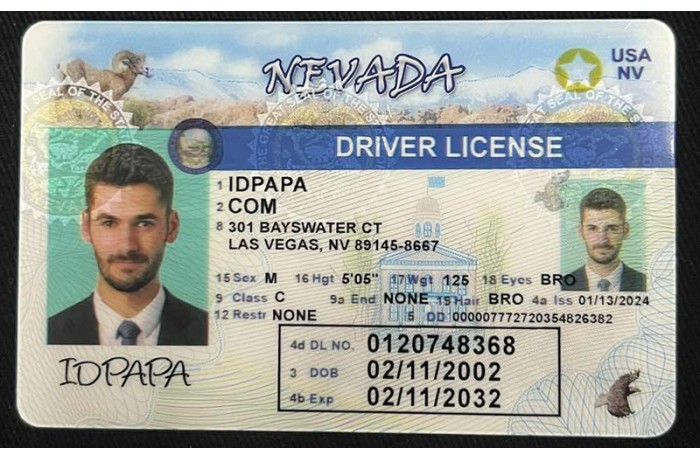The Evolving Landscape of Digital Identity: Trends Shaping the Future
The Evolving Landscape of Digital Identity: Trends Shaping the Future
Blog Article
The digital realm is experiencing a rapid shift in how we authenticate ourselves online. Novel technologies are redefining the concept of digital identity, creating both possibilities and fostering a more robust online experience. Blockchain are becoming increasingly prevalent in this space, providing consumers with greater control over their data and {identities|. This trend will continue to influence various sectors, including finance, healthcare, and government.
- Numerous key trends include this shift:
- Biometric authentication
- Deep learning
- The rise ofthe metaverse
Addressing these trends is crucial for {individuals|, businesses, and governments to ensure a safe, secure digital future.
Countering ID Fraud: Strategies for a Secure Digital World
In today's increasingly digital landscape, identity deceit poses a significant threat to individuals and organizations alike. To successfully combat this growing menace, it is crucial that we implement robust security measures and foster a culture of awareness.
Utilizing multi-factor authentication, regularly updating software and devices, and adhering strong password hygiene are primary steps in safeguarding against ID illegality. Furthermore, educating users about the threats of phishing scams and other social engineering tactics is vital.
Cooperation between governments, businesses, and individuals is essential to creating a secure digital environment. By working together, we can mitigate the impact of ID fraud and preserve our valuable information in an increasingly interconnected world.
Navigating the Legal Labyrinth: copyright Laws and Their Implications
The realm of fake identification unveils a complex legal landscape. Laws governing these artifacts vary widely across jurisdictions, presenting a tangled web for both individuals and authorities.{ Possession of a copyright can result in severe penalties, including fines, imprisonment, and past offenses. Moreover, the acquisition of these fraudulent documents can frequently be connected to more severe offenses, further underscoring the gravity of adherence with these laws.
Biometric Authentication: Revolutionizing Digital Identity Security
The digital realm is rapidly evolving, necessitating robust security measures to safeguard sensitive information. Person-Specific Identifiers, the science of measuring and analyzing inherent human characteristics, presents a compelling solution for enhanced security within digital ID systems. By Anti-forgery technology leveraging biometrics like fingerprint scanning, facial recognition, or iris analysis, digital identities can be authenticated with unprecedented accuracy and resilience against fraud. This technology not only streamlines identity verification processes but also establishes a secure framework for managing sensitive personal data in an increasingly interconnected world.
Furthermore, biometrics offeradvantages over traditional authentication methods|. They are inherently difficult to forge or replicate, reducing the risk of unauthorized access and identity theft. Moreover, biometrics simplify user interaction, as users can conveniently verify their identities without relying on physical tokens.
- Despite these benefits| , it is crucial to address potential concerns surrounding biometrics, including data privacy and the potential for misuse. Robust regulatory frameworks and ethical guidelines are essential to ensure responsible implementation and mitigate any negative consequences.
Balancing Convenience and Privacy: The Ethical Considerations of Biometric Authentication
Biometric authentication offers a seamless way to authenticate users. However, the increasing adoption of this technology raises significant ethical questions. Maintaining biometric data presents a unique set of challenges to user privacy, as this information is inherently personal and unalterable. Moreover, the potential for abuse of biometric data by third parties is a serious concern.
A delicate balance must be maintained between the utilities of convenience and the necessity to protect user privacy. Stringent safeguards, such as data anonymization, transparent consent mechanisms, and strict regulations are critical to mitigate these risks and ensure the ethical implementation of biometric authentication.
Ultimately, the goal should be to leverage the benefits of this technology while upholding the fundamental right to privacy.
Strengthening Trust: Best Practices for Implementing Secure Digital Identity Solutions
In today's increasingly digital world, reliable digital identity solutions are paramount to fostering trust and securing sensitive information. To effectively implement these systems, organizations must adhere to best practices that prioritize privacy, transparency, and scalability. A key component involves implementing multi-factor authentication mechanisms to verify user credentials. Additionally, continuous audits and security reviews are crucial for identifying and mitigating potential vulnerabilities. By adhering to these best practices, organizations can create a secure and trustworthy environment for users while mitigating the risk of fraud and data breaches.
 Report this page
Report this page